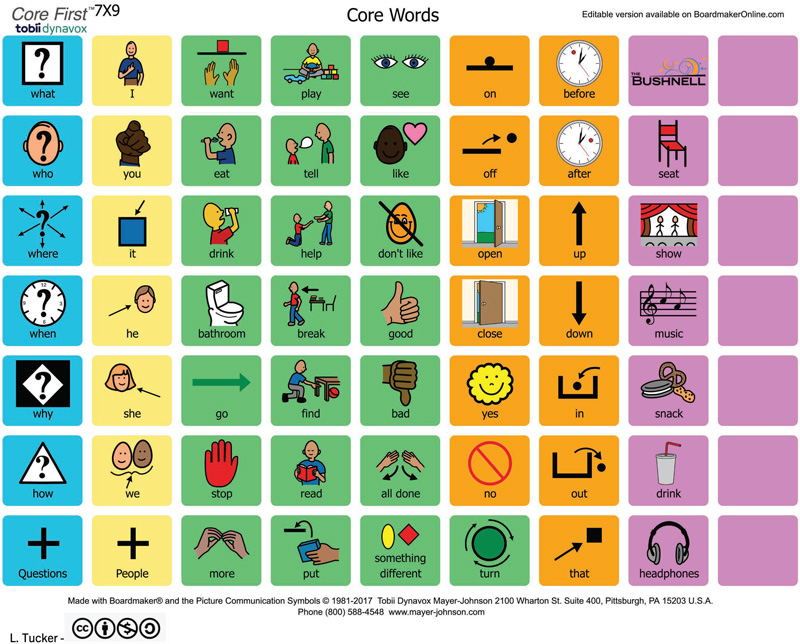Many sensory inclusive theaters and performing arts venues have incorporated sensory-friendly (SF) or relaxed performances (RP) to increase access to the arts for all patrons. Often, these events are geared towards children or younger audiences and for individuals who experience hypersensitivity. SF or RP often incorporate environmental and performance accommodations to reduce sensory stimuli and provide options for patrons.

Image 1. Theater Sensory Bag
This article will share the case of The Bushnell Center for the Performing Arts in Hartford, Connecticut. The Bushnell has been offering SF/RP for over a decade but is evolving to offer accommodations during all events to consistently increase inclusivity.
Performance Modifications
Some touring performances offer an SF/RP option. Generally, these sensory inclusive theater performances have reduced auditory and visual stimuli. There might also be warnings before an unexpected event. For example, before a louder noise, a visual cue might be provided in anticipation. If strobe lights are typically utilized within a scene, they might be eliminated for an SF/RP. The performances might also be held in smaller spaces to reduce the crowds. In addition to performance modifications, the venue itself also modifies the environment.
Environmental Modifications
Increasing flexibility within the sensory inclusive theater environment can benefit a variety of patrons. During SF/RP, the house lights are often kept on, and patrons can move about the theater during the performance. This adapted lighting can reduce anxiety and improve their seats’ lighting. The auditorium door might sometimes be kept open as a visual cue for patrons to exit at any time. Changing the expectations of theater etiquette can remove significant pressure on patrons and caregivers. If individuals need to take a break, use the restroom, or have a snack, they can move about throughout the performance.
Beyond Sensory-Friendly and Relaxed Performances
However, beyond these specific events, there are ways for performing arts venues to increase access for individuals across sensory needs. SF/RP generally cater to individuals with hypersensitivity, whereas others might have a hypo-sensory profile and may crave sensory stimulation (Lefebvre et al., 2023). Therefore, providing additional support at all times, during any performance, increases choice and options for all patrons, especially autistic individuals.
In a focus group of 24 autistic adults, MacLennan et al. (2022) outlined six principles of sensory environments: recovery, sensoryscape, space, adjustments, understanding, and predictability. The Bushnell has considered these principles when identifying accommodations available for all performances.
Visual Supports
The theater has created a support package available at all events. First, sensory bags are available at the customer service booth for adults and children. Image 1 above displays the sensory bags. They include noise-canceling headphones, earplugs, sunglasses, fidgets, and communication supports. The items available in the bags can be utilized to address any challenges within the sensoryscape of the event and can be used at the patron’s digression.

Image 2. Core Communication Board
The bags also include a mini core communication board with theater-specific fringe vocabulary to facilitate communication. Image 2 above displays an example of the core communication. In addition to a printed version available in the bags, the core communication board is also available for download on The Bushnell’s website.
The theater website also includes a variety of visual supports that can be used before, during, and after the event to enhance the predictability for patrons. In addition to the communication board, there is a choice board (image 3 below) depicting the options always available at every sensory inclusive theater event, including sensory bags, drinks, break space, headphones, shopping, ear plugs, and a bathroom.

Image 3. Choice Board
The links to these resources are always available on The Bushnell’s public website and at the customer service desk. Assistive listening devices are also available to be used by patrons to have an improved auditory experience of the performance. These universal access supports have expanded the inclusivity of the theater for patrons with a continuum of sensory needs.
Front of House Training
To address the principle of understanding, the Bushnell front-of-house staff and volunteers are trained on all accessible services that the venue offers. The Front of House Management offers an accessibility webinar held annually in the winter for all 600 volunteers and 40 part-time staff. For SF/RP, the staff and volunteers assigned to that specific performance are given a training manual. This manual reminds them of the accommodations made to the lighting and sound, the items available at the resource table, the behaviors they might expect, who to report any issues to, and where certain rooms are (family restrooms, quiet space, etc.). They are also updated as any additional supports are adjusted.
“Nothing About Us Without Us”
Charlton (1998) emphasized the importance of including the voices of individuals with disabilities with his quote, “Nothing about us without us.” Similarly, when designing sensory inclusive theater events, consulting with members of the disabled community is crucial. Theater managers should seek input and feedback from members of the disabled community to ensure all perspectives are considered. The Bushnell Front of House Manager consistently confers with community members for feedback. This collaboration includes feedback surveys and focus groups. The Bushnell continues to increase opportunities for members of the disabled community to share their perspectives and needs with the organization.
After each SF/RP, a survey is distributed to patrons to gather information and suggestions. Within the past year, approximately five events, the most popular supports were the fidgets, coloring options, and quiet spaces. The survey also provides an opportunity for patrons to make suggestions. One patron suggested having sunglasses for any visual sensitivities. The Bushnell subsequently added adult- and child-size sunglasses available at all events.
Patrons are also asked to share any additional thoughts regarding their experience. One crucial quote was:
“Thank you. I cannot express how much it means to my family that my young child with autism has access to theatre in a way that isn’t stressful for him or me. It honestly changes our life.”
Other responses emphasized the event was inclusive, stress-free, and a safe environment.
Curtains Up for All
Choices within community spaces are essential for individuals with unique sensory needs, especially in the performing arts. SF/RP removes many barriers for individuals to access live art performances, specifically for those with sensory hypersensitivity. Beyond these unique events, organizations should also consider universal accommodations for all events to increase access. Evaluating experiences through the six principles of sensory environments: recovery, sensoryscape, space, adjustments, understanding, and predictability (MacLennan et al., 2022) can enhance access for all individuals across sensory needs. Venues and organizations should also work with individuals within their community to establish accommodations and support to be accessed during performances beyond just SF/RP.
Lauren Tucker, EdD, is an Associate Professor of Special Education at Southern Connecticut State University and can be reached at tuckerL7@southernct.edu. Catt Gruszka Vadala is the Front of House and Volunteer Services Senior Manager at The Bushnell Center for the Performing Arts and can be reached at cgruszka@bushnell.org.
References
Charlton, J. I. (1998). Nothing about us without us: Disability oppression and empowerment. Univ of California Press.
Lefebvre, A., Tillmann, J., Cliquet, F., Amsellem, F., Maruani, A., Leblond, C., Beggiato, A., Germanaud, D., Amestoy, A., Ly-Le Moal, M., Umbricht, D., Chatham, C., Murtagh, L., Bouvard, M., Leboyer, M., Charman, T., Bourgeron, T., Delorme, R., & Dumas, G. (2023). Tackling hypo and hyper sensory processing heterogeneity in autism: From clinical stratification to genetic pathways. Autism Research, 16(2), 364–378. https://doi.org/10.1002/aur.2861
MacLennan, K., Woolley, C., @21andsensory, E., Heasman, B., Starns, J., George, B., & Manning, C. (2022). “It Is a Big Spider Web of Things”: Sensory Experiences of Autistic Adults in Public Spaces. Autism in Adulthood. https://doi.org/10.1089/aut.2022.0024






